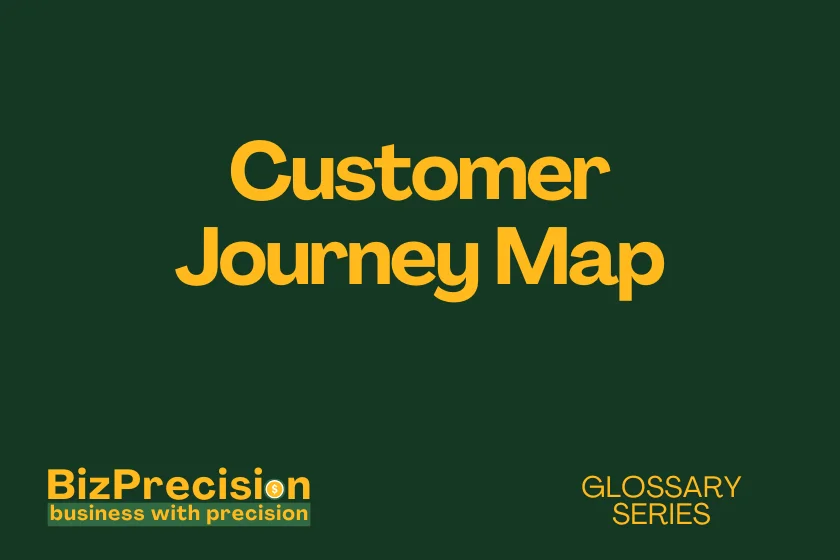What is a Customer Journey Map?
A customer journey map is a visual guide that tracks how customers interact with your business across all touchpoints, from first contact to long-term loyalty.
Customer journey maps help businesses understand their customers better. According to a 2023 Gartner study, companies that use customer journey mapping see a 50% higher customer satisfaction rate and a 34% reduction in service costs.
Let’s explore how these powerful tools can transform your understanding of customer experiences and drive business growth.
Understanding Customer Journey Mapping
Core Components of Customer Journey Maps
A journey map has four essential parts that work together. The timeline shows every step in the customer’s path. The touchpoints reveal where customers connect with your business. The emotions track how customers feel at each step. The actions describe what customers do at each stage.
Customer personas form the foundation of effective journey maps. These detailed profiles help you understand who your customers are and what they need. Each persona represents a different type of customer with unique goals and pain points.
Data points make your journey map accurate and useful. Track metrics like satisfaction scores, time spent at each stage, and conversion rates. These numbers help you spot problems and measure improvements.
Types of Customer Journey Maps
Current state maps show how customers interact with your business today. They help you find and fix existing problems. Teams use these maps to spot quick wins and improve customer service right away.
Future state maps plan ideal customer experiences. They set clear goals for improvement. Your team can use these maps to design better products and services that customers will love.
Day-in-the-life maps track everything customers do, even when not using your product. These maps reveal new opportunities to help customers. They show gaps in service that your business could fill.
Benefits of Customer Journey Mapping
Journey maps boost customer satisfaction by finding pain points. When you know where customers struggle, you can fix problems fast. This leads to happier customers who stay with your business longer.
Teams work better with shared journey maps. Everyone sees how their work affects customers. This helps staff make better decisions and provide better service.
Cost savings come from fixing problems early. McKinsey reports that companies using journey maps cut service costs by 15-20%. They handle fewer complaints and solve issues faster.
Key Stages in the Customer Journey
The awareness stage starts when customers first learn about you. They might see an ad or hear from friends. Your job is to show how you solve their problems.
During consideration, customers compare options. They read reviews and ask questions. Clear information helps them make good choices.
The purchase stage is when customers buy from you. Make this step easy and clear. Remove any barriers that might stop the sale.
After purchase, focus on retention and loyalty. Help customers use your product well. Solve problems quickly when they arise.
Creating an Effective Customer Journey Map
Step-by-Step Mapping Process
Start by gathering your team and setting clear goals. Define what you want to learn from the map. Pick the customer segment you’ll focus on first.
Collect customer data from multiple sources. Use surveys, interviews, and support tickets. Website analytics and sales data provide extra insights.
Draw your basic map with the main stages. Add customer actions and emotions at each point. Keep the design simple and clear at first.
Test your map with real customer feedback. Show it to customers and ask if it matches their experience. Update the map based on what you learn.
Essential Tools and Templates
Digital mapping tools make creation easier. Popular options include Miro and LucidChart. These tools let teams work together on maps in real time.
Simple templates help you start quickly. Begin with a basic timeline and add details as you learn more. Free templates are available from many service design websites.
Spreadsheets work well for data tracking. Record customer feedback and metrics in organized sheets. Link this data to your visual journey map.
Data Collection Methods
Customer interviews provide deep insights. Ask open questions about their experience. Record their exact words to capture real feelings.
Surveys reach many customers quickly. Keep surveys short and focused. Mix rating scales with open-ended questions.
Website analytics show how customers behave. Track where they click and how long they stay. This data reveals hidden patterns in customer journeys.
Common Mapping Mistakes to Avoid
Don’t guess what customers think. Always use real data and feedback. Assumptions lead to wrong decisions and wasted effort.
Keep maps simple and clear. Too much detail makes maps hard to use. Focus on the most important information.
Update your maps regularly. Customer behavior changes over time. Old maps can lead to outdated decisions.
Implementing Customer Journey Maps
Turning Insights into Action
Create clear action plans from map insights. List problems in order of importance. Start with quick wins that show fast results.
Assign owners to each improvement project. Set deadlines and track progress. Regular check-ins keep work moving forward.
Share success stories across teams. Show how changes help customers. This builds support for more improvements.
Measuring Journey Map Success
Track key performance indicators (KPI) carefully. Monitor customer satisfaction scores and retention rates. Compare results before and after changes.
Net Promoter Score helps measure loyalty. Ask customers if they would recommend you. Higher scores show better customer experiences.
Cost savings show business impact. Calculate reduced support costs and higher sales. This proves the value of journey mapping.
Updating and Maintaining Journey Maps
Review maps every three months. Look for new patterns and problems. Update maps when you spot important changes.
Get fresh customer feedback often. People’s needs change over time. Regular input keeps maps accurate and useful.
Train new team members on journey mapping. Help everyone understand the process. This keeps the practice alive in your company.
Cross-Team Collaboration Strategies
Hold regular journey mapping workshops. Bring different teams together. Share insights and plan improvements.
Use shared online tools for better teamwork. Everyone sees the same information. Updates reach all teams quickly.
Celebrate team successes together. Recognize good work across departments. This builds stronger working relationships.
Conclusion
Customer journey maps transform how businesses understand their customers. They show exactly where to make improvements that matter.
Start your journey mapping project today. Begin with one customer segment and a simple map. Build from there as you learn more.
Remember these key steps for success:
- Use real customer data
- Keep maps simple and clear
- Update regularly
- Take action on insights
Your next step is to gather your team and pick your first mapping project. Focus on a customer segment that matters most to your business growth.







